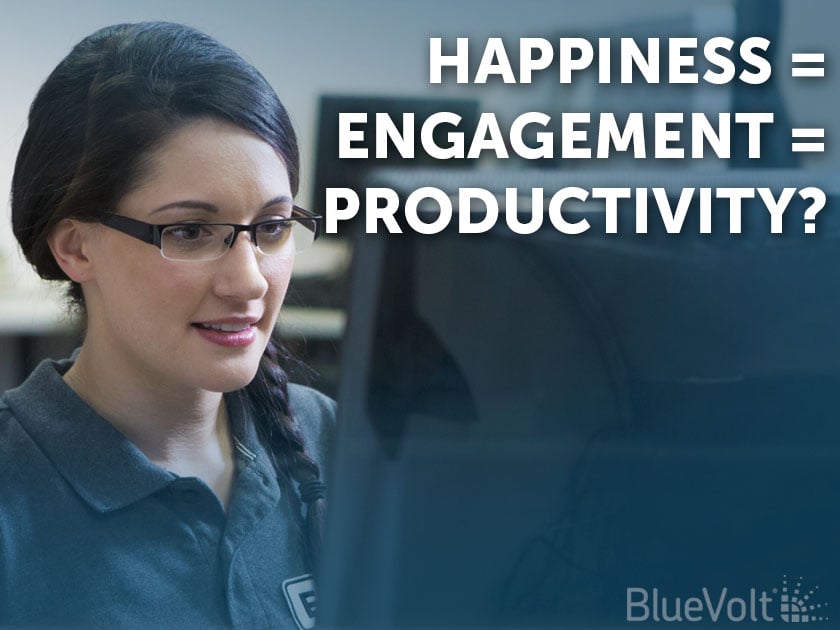
It's believed that happiness at work leads to greater engagement on the job. Which in turn can lead to more productivity and goal achievement. We recently spoke with Happy Brain Science's Chief Operating Officer Ayla Lewis. She's an expert in utilizing research-backed findings from the field of brain science to help organizations implement training and professional development programs that increase individual happiness, and in turn boost engagement and productivity.
"Science suggests if we're thriving, we're producing 12-25% more work, resulting in greater productivity," says Lewis. "One of the critical paths to stronger productivity is happiness. We've found that positive emotions allow an individual to think beyond simple solutions and engage with their world in a broader, more collaborative way. In addition, these positive emotions can also leads to an increase in curiosity and a desire to continually learn."
One facet of individual happiness is the measure of engagement an employee feels with his/her job in the organization, the work, the company's mission, and the organization as a whole. According to the Gallup 2017 State of the American Workplace Report, around 61% of the American workforce does not feel engaged in their jobs. "An unengaged employee will not go the extra mile, and may not participate or show up late to what could be a valuable chance for growth when it comes to training." says Lewis.
Lewis notes that the path from unhappy and unengaged to engaged and thriving is not as difficult as it may appear. An employee is thriving when a reward state in the brain is activated, allowing for collaborative, engaging, and innovative work. This thriving state can be created by meeting the five social needs all humans have, represented by SCARF:
- Status
- Certainty
- Autonomy
- Relatedness
- Fairness
"Without these five needs met, a brain, will go into a fight-flight-freeze response, reducing its ability to problem-solve or think creatively. This ultimately hurts an employee’s ability to learn, grow, and apply knowledge while on the job." says Lewis
Generate a Happy Work Environment: The Tactics
To increase an employee's SCARF, the first step is to assess the employee's level of satisfaction within the company. Lewis notes that collecting data with a questionnaire or survey about the opportunities and challenges of a work environment can help companies gain a better understanding of the engagement levels of employees. Research-based questionnaires, like those available with the Penn Resilience Program, can be helpful. With this insight, the company can then proceed to make changes to help employees feel more satisfied with their work environment.
After surveying the employees' level of satisfaction, companies can institute professional development programs to increase an individual's SCARF. Such programs can be designed in order to increase autonomy and competency. Other methods to increase employee engagement and happiness include encouraging practices such as mindfulness, engaging in gratitude exercises on the job, and creating a positive work environment from the top down in the organization.
"By having opportunities to improve engagement and happiness on the job, employees will utilize the best brain they have: one ready to truly learn, remember, engage, and grow. And as happy employees, these people contribute positively to the ultimate success of the organization." says Lewis.


